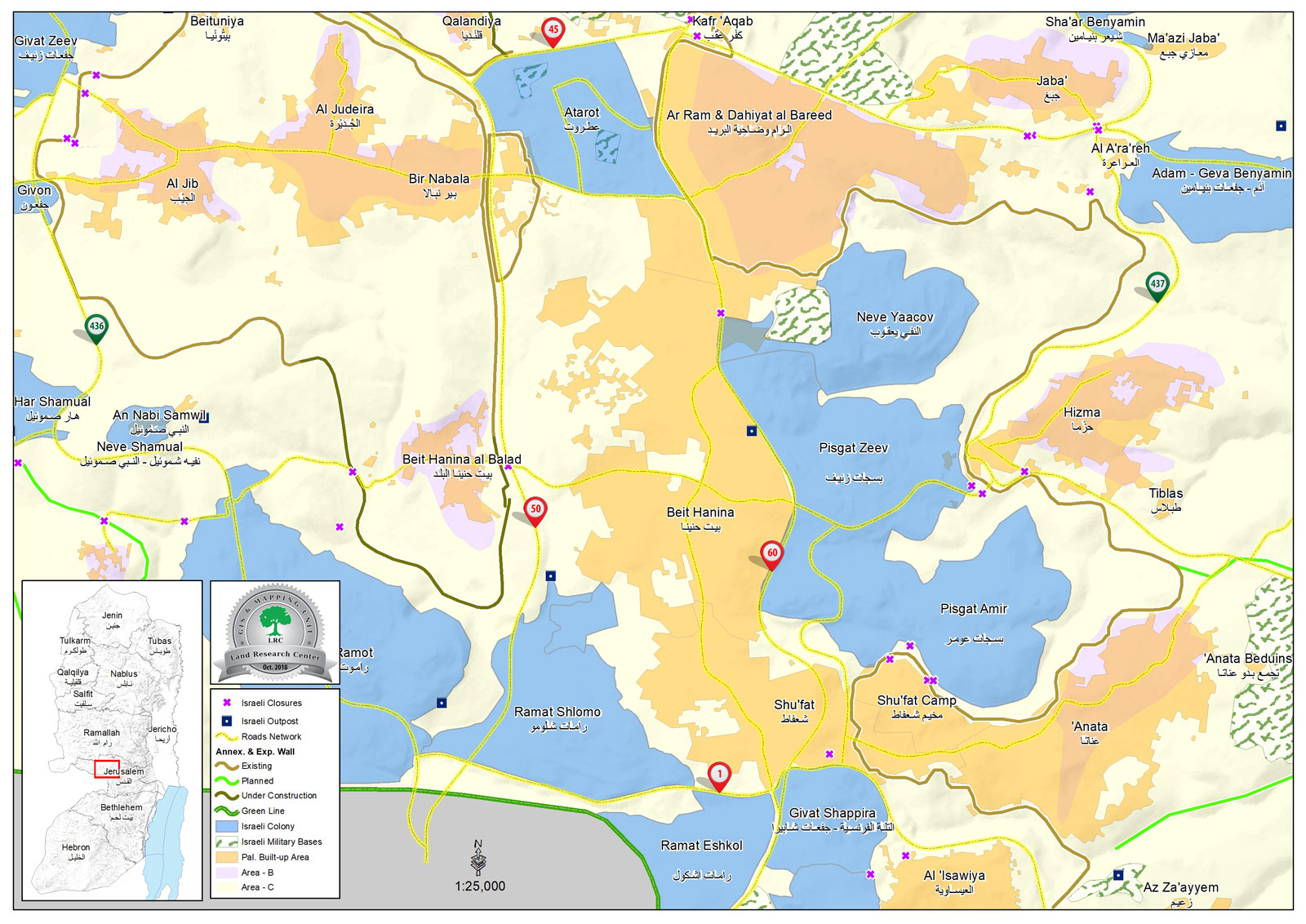2019-03-31
The Israeli occupation “Lands’ department†force a farmer to demolish his own structure in Hizma
On March 31st 2019, The Israeli occupation lands’ department compelled a citizen to demolish his agricultural facilities, after the targeted structures were previously notified of demolition on the claim "unlicensed construction".
Reportedly, The demolition included 3 barracks (100 m2 for each), one of them was used for poultry husbandry, another one for pigeon breeding, and the third is used as a store. Noteworthy, the structures are close to Pizgat Ze’av illegal settlement, which was built on confiscated lands from Hizma village.
Affected farmer, Khairi Ibrahim told LRC reporter:
“One month ago, The Israeli occupation troops showed up and served a demolition order on the barracks, under claims that my land belongs to the Israeli Lands’ department. After I attended the court, they decided that the structures should be demolished before April 15, or the occupation authorities will implement the demolition, and file the high expenses on me.
In order to avoid paying the expenses of the dozer, I decided to demolish the structures, in order to reduce financial lost.”
The occupation claims that Ibrahim’s land is absentees’ properties. Noteworthy, at the time the land is confiscated under unjust claims, the occupation will leak it to Hizma settlers for colonial expansion.
About Hizma:[1]
It is 8km to the northeast of Jerusalem; it populates 9256 people on a built-up area of 1000 dunums out of its 18000 dunums total land area. According to Oslo lands classification of 1993, a small part of the village's area — the built-up area– is classified as area "B" that is under Palestinian control where the rest is classified "C" that is administratively run by the occupation municipality of Jerusalem .
The occupation confiscated 2500 dunums of Hizma for the expansion of various colonies namely ( Pisgat Zev, Pisgat Amir, Adam and Nevi Yaacov). It should be marked that the apartheid wall travels 4km on the lands of Hizma town, isolating 40% of the village's total area behind its construction.
Noteworthy, closures on the town have been applied on the town ever since the first intifada of 2000. Such measure was meant as a collective punishment on the town's residents.
[1] GIS-LRC

